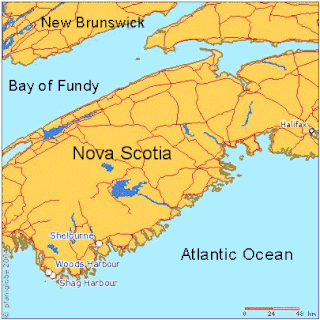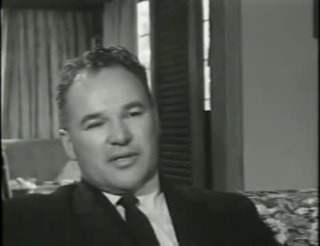Related Research Articles

An unidentified flying object (UFO), or unidentified anomalous phenomenon (UAP), is any perceived airborne, submerged or transmedium phenomenon that cannot be immediately identified or explained. Upon investigation, most UAPs are identified as known objects or atmospheric phenomena, while a small number remain unexplained.

Project Blue Book was the code name for the systematic study of unidentified flying objects by the United States Air Force from March 1952 to its termination on December 17, 1969. The project, headquartered at Wright-Patterson Air Force Base, Ohio, was initially directed by Captain Edward J. Ruppelt and followed projects of a similar nature such as Project Sign established in 1947, and Project Grudge in 1949. Project Blue Book had two goals, namely, to determine if UFOs were a threat to national security, and to scientifically analyze UFO-related data.

Kirtland Air Force Base is a United States Air Force base. It is located in the southeast quadrant of the Albuquerque, New Mexico, urban area, adjacent to the Albuquerque International Sunport. The base was named for the early Army aviator Col. Roy C. Kirtland. The military and the international airport share the same runways, making ABQ a joint civil-military airport.

Black triangles are UFOs reported as having a triangular shape and dark color, typically observed at night, described as large, silent, hovering, moving slowly, and displaying pulsating, colored lights which they can turn off.

The Shag Harbour UFO incident was the reported impact of an unknown large object into waters near Shag Harbour, Nova Scotia, a tiny fishing village on the Atlantic coast, on 4 October 1967. The reports were investigated by various Canadian civilian and military agencies as well as the U.S. Condon Committee.

James Edward McDonald was an American physicist. He is best known for his research regarding UFOs. McDonald was a senior physicist at the Institute for Atmospheric Physics and a professor of meteorology at the University of Arizona in Tucson.

The Condon Committee was the informal name of the University of Colorado UFO Project, a group funded by the United States Air Force from 1966 to 1968 at the University of Colorado to study unidentified flying objects under the direction of physicist Edward Condon. The result of its work, formally titled Scientific Study of Unidentified Flying Objects, and known as the Condon Report, appeared in 1968.

The Phoenix Lights were a series of widely sighted unidentified flying objects observed in the skies over the southwestern U.S. states of Arizona and Nevada on March 13, 1997.

The Mariana UFO incident occurred in August 1950 in Great Falls, Montana. The film footage of the sighting, filmed by local baseball coach Nick Mariana, is believed to be among the first ever taken of what came to be called an unidentified flying object. The U.S. Air Force, after a short investigation, concluded that what had actually been sighted were the reflections of two F-94 jet fighters, a claim that would later be retracted.
Identifying unidentified flying objects (UFOs) is a difficult task due to the normally poor quality of the evidence provided by those who report sighting the unknown object. Observations and subsequent reporting are often made by those untrained in astronomy, atmospheric phenomena, aeronautics, physics, and perception. Nevertheless, most officially investigated UFO sightings, such as from the U.S. Air Force's Project Blue Book, have been identified as being due to honest misidentifications of natural phenomena, aircraft, or other prosaic explanations. In early U.S. Air Force attempts to explain UFO sightings, unexplained sightings routinely numbered over one in five reports. However, in early 1953, right after the CIA's Robertson Panel, percentages of unexplained sightings dropped precipitously, usually being only a few percent in any given year. When Project Blue Book closed down in 1970, only 6% of all cases were classified as being truly unidentified.
The Chicago O'Hare UFO sighting occurred on November 7, 2006, around 4:15 p.m. when 12 United Airlines employees and a few witnesses outside O'Hare International Airport reported a sudden UFO sighting. The Federal Aviation Administration refused to investigate the matter because this unidentified flying object (UFO) was not seen on radar, instead calling it a "weather phenomenon".
This is a list of notable alleged sightings of unidentified flying objects (UFOs) in the United Kingdom. Many more sightings have become known since the gradual release, between 2008 and 2013, of the Ministry of Defence's UFO sighting reports by the National Archives. In recent years, there have been many sightings of groups of slowly moving lights in the night sky, which can be easily explained as Chinese lanterns. Undertaken between 1997 and 2000, Project Condign concluded that all the investigated sightings of unidentified aerial phenomena in the UK could be attributed to misidentified but explicable objects, or poorly understood natural phenomena.

From July 12 to 29, 1952, a series of unidentified flying object (UFO) sightings were reported in Washington, D.C., and later became known as the Washington flap, the Washington National Airport Sightings, or the Invasion of Washington. The most publicized sightings took place on consecutive weekends, July 19–20 and July 26–27. UFO historian Curtis Peebles called the incident "the climax of the 1952 (UFO) flap"—"Never before or after did Project Blue Book and the Air Force undergo such a tidal wave of (UFO) reports."
The Exeter incident or Incident at Exeter was a highly publicized UFO sighting that occurred on September 3, 1965, approximately 5 miles (8 km) south of Exeter, New Hampshire, in the neighboring town of Kensington. Although several separate sightings had been made in the area by numerous witnesses in the weeks leading up to the specific incident, it was the September 3 sighting which eventually became by far the most famous, involving a local teenager and two police officers. In 2011, Skeptical Inquirer offered an explanation of the incident, based on details reported by the eyewitnesses.
The Gorman dogfight was a widely publicized UFO incident which took place on October 1, 1948, in the skies over Fargo, North Dakota, United States. United States Air Force (USAF) Captain Edward J. Ruppelt wrote in his bestselling and influential The Report on Unidentified Flying Objects that the "dogfight" was one of three "classic" UFO incidents in 1948 that "proved to [Air Force] intelligence specialists that UFOs were real," along with the Chiles-Whitted UFO encounter and the Mantell UFO incident. In 1949, the official explanation made by the USAF was that the Gorman dogfight had been caused by a lighted weather balloon.
The Lakenheath-Bentwaters Incident was a series of radar and visual contacts with unidentified flying objects over airbases in eastern England on the night of 13–14 August 1956, involving personnel from the Royal Air Force (RAF) and the United States Air Force (USAF). The incident has since gained some prominence in the literature of ufology and the popular media.
The Sperry UFO case was a sighting of an Unidentified Flying Object by the captain, Willis Sperry, and other crew of an American Airlines DC-6 airborne near Mount Vernon, Maryland on 29 May 1950.

UFOs: Past, Present, and Future is a 1974 documentary film that examines several prominent UFO sightings from the post-war to contemporary era. It was re-released in 1976 and 1979 under the title UFOs: It Has Begun to coincide with renewed interest in the subject due to the release of Steven Spielberg's Close Encounters of the Third Kind. It is based on the book UFOs: Past, Present, and Future by Robert Emenegger.

The Report on Unidentified Flying Objects is a 1956 book by then-retired Air Force UFO investigator Edward J. Ruppelt, detailing his experience running Project Bluebook. The book was noted for its suggestion that a few UFO sightings might be linked to spikes of atomic radiation. Contemporary media summarized four topics discussed in the book:

On May 19, 1986, a series of radar and visual contacts with unidentified flying objects (UFOs) took place across the Brazilian states of São Paulo, Rio de Janeiro, Minas Gerais and Goiás, becoming locally known as the "Night of the UFOs".
References
- ↑ Shere's conclusion was recorded in the Blue Book file as follows: "The opinion of the preparing officer is that this object may possibly have been an unidentified aircraft, possibly confused by the runways at Kirtland Air Force Base. The reasons for this opinion are: 1. The observers are considered competent and reliable sources and in the opinion of this interviewer actually saw an object they could not identify. 2. The object was tracked on a radarscope by a competent operator. 3. The object does not meet identification criteria for any other phenomena".
- ↑ Thayer, Scientific Study of Unidentified Flying Objects , University of Colorado, 1968, pp. 212–213.